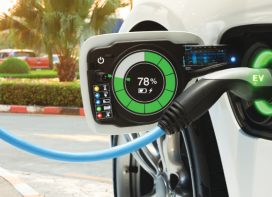Fleet operators can lead the e-Mobility revolution
On the one hand, high upfront costs, lack of charging infrastructure and uncertain performance of a battery-powered vehicle may hold back rapid adoption of e-mobility. On the other hand, fleet operators cite a ray of hope thanks to low operational costs as they put in more kilometers on their vehicles each year. It could be more feasible for them to withstand high upfront costs, considering a shorter payback time-frame, despite a higher total cost of ownership (TCO) per km.
The role of Government
It is commendable that the Government of India has budgeted INR 10,000Cr under FAME II, for three years starting from April 2019 to accelerate adoption of EV and hybrid vehicles in India. The scheme emphasizes the electrification of public transport that includes shared mobility. This would naturally promote the electrification of high utilisation vehicles, i.e. shared mobility solutions such as public transit, commercial vehicles, threewheelers, delivery services, etc.
One way to achieve this is to subsidise operational expenditures of managing EV fleets, which would link incentives to usage rather than moving vehicles off a sales lot. Such a radical shift in approach has been adopted by NITI Aayog in their Model Concession Agreement tender for the introduction of public transport electric buses in cities based on subsidizing operational expenditure (opex), i.e. per km cost of operating buses. The agreement also promotes innovation and faster adoption of e-mobility by facilitating public-private partnerships and enabling new models of vehicle finance.
Similarly, operational expenditure of commercial services could be creatively subsidized. This could be done indirectly by maintaining the delivered cost of electricity for charging vehicles low for 4-5 years to make e-mobility projects financially viable, creating zero-emission zones in cities, allotting dedicated and sufficient parking spots for EVs, subsidizing the land lease rental to set up charging and battery swapping stations, and other non-fiscal initiatives to incentivize demand for electric mobility in India.
Further, fiscal incentives should be designed to specifically subsidize the one cost that makes EVs expensive: batteries. The high upfront cost of EVs is on account of the high cost of the battery pack, which constitutes 40-50% of the cost of an electric vehicle. The FAME II scheme emphasizes local manufacturing and will provide incentives to only those vehicles which are fitted with advanced batteries like Li-ion battery and other new technology batteries.
By offering financial incentives for manufacturing of batteries as against the entire EV, the manufacturing of batteries too would get accelerated, technology and innovation would flourish, economies of scale would be achieved, and batteries would be both domestically produced and affordable. This tipping point is crucial to make e-mobility dream a reality in the country, and to avoid replacing imports of fuels with imports of batteries.
Another measure worth adopting to make the shift to EVs feasible is to waive tax, registration, and commercial permit charges. MoRTH has already signaled major steps at waiving permits and the intent to reduce the relative costs of ownership for EVs. Taxes and registration charges could reduce on-road prices by 10-15%.
Recently, several states have teased concurrent EV policies, including Delhi, Karnataka, Telangana, Andhra Pradesh, Maharashtra, and Gujarat. There is an urgent need for states to deliver on a coordinated, comprehensive framework to accelerate electric mobility. The e-mobility revolution depends on the steps taken by states to make it real.
To further intertwine e-mobility with renewable energy, batteries can also be treated as decentralized electricity storage solutions; distribution companies should be able to draw power from vehicle batteries to balance the grid. This will help meet the storage needs of renewable commitments and reduce the cost of maintaining grid loads while enabling a new revenue source for EV batteries.
In addition, the second life of EV batteries, once they do not perform for automotive use, could be deployed as power banks for storing solar energy and non-automotive applications. Several more reasons why government funding should encourage the development and deployment of advanced battery technologies.
Overall, the right policy framework from the government to boost EVs and closely tying them up with the scaling up of shared mobility can bring in the shared electric mobility future. Shared Electric Mobility, if planned and implemented well, will amplify environmental benefits besides yielding significant monetary savings for all stakeholders involved. Right from the country as a whole to the manufacturer, fleet operator, charging infrastructure provider, driver of EV and the urban commuter, this road could finally lead to a better India.
 TrafficInfraTech Magazine Linking People Places & Progress
TrafficInfraTech Magazine Linking People Places & Progress


